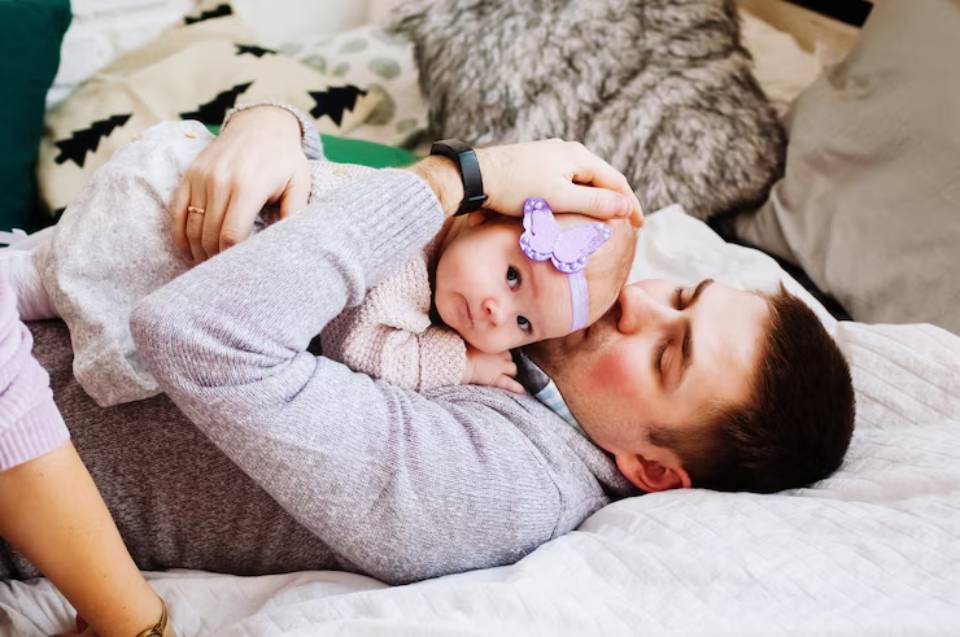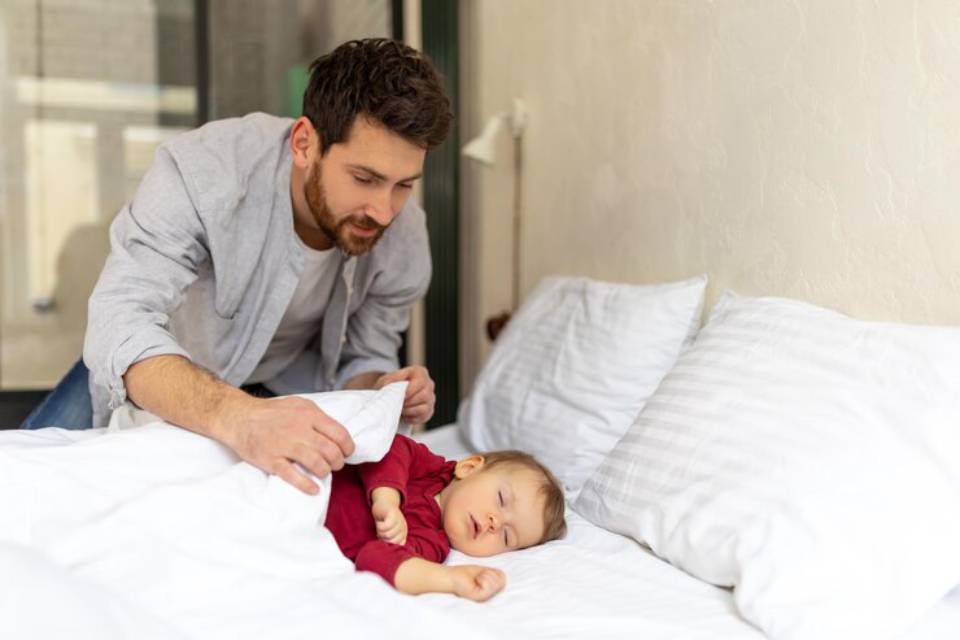
Sleep Associations: Good, Bad & How to Change Them
It’s 2 AM. You’ve fed your baby, rocked them for 20 minutes, tiptoed out of the room and they’re awake again. Sound familiar?
If sleep feels like a delicate routine you have to repeat every time your baby stirs, you’re likely dealing with sleep associations. While completely normal, these habits can sometimes become exhausting, especially when your baby can’t fall back asleep without your help.
But don’t worry. You’re not alone, and you’re not stuck. In fact, most babies develop some form of sleep cue — it’s how they learn what “sleep time” means. The key is learning how to shift towards associations that support better, longer sleep for your baby and for you.
In this guide, you’ll learn what baby sleep associations are, which ones help or hinder rest, and how to gently change unhelpful patterns without tears or stress. The aim isn’t perfection — it’s confidence, calm, and better nights.
What Are Sleep Associations?
How Babies Learn to Fall Asleep
Sleep associations are the things your baby learns to link with falling asleep. These can be:
- External (rocking, feeding, white noise)
- Internal (sucking thumb, rubbing blanket, drowsiness signals)
- Environmental (dark room, familiar scent, certain temperature)
If your baby regularly falls asleep while nursing, being rocked, or held, they may expect the same condition each time they wake. Since babies cycle through light and deep sleep every 30–60 minutes, that expectation becomes a real challenge — especially overnight.
Why Sleep Associations Develop
From birth, babies depend on caregivers to soothe them. Over time, they form strong neural connections between specific actions and sleep. This is completely natural. After all, don’t many adults fall asleep faster with white noise, certain pyjamas, or a bedtime routine?
The goal isn’t to eliminate sleep associations altogether, but to shift towards ones your baby can access independently, especially during night wakings.
Common Sleep Associations: The Good and the Not-So-Good
Positive Sleep Associations (Independent Cues)

These are habits or cues your baby can manage without your ongoing presence. They promote healthy sleep and make it easier for your baby to resettle after waking.
Examples:
- White noise
- Sleep sacks or swaddles (age-appropriate)
- A dark room
- A consistent bedtime routine
- A comfort object (e.g. muslin or soft toy after 12 months)
These cues are helpful because they remain available even when you’re not in the room.
Negative Sleep Associations (Dependent Cues)
These are soothing methods that require you, or external input, each time your baby wakes.
Common ones include:
- Feeding to sleep (breast or bottle)
- Rocking or bouncing to sleep
- Driving or pram walking to induce naps
- Being held or worn constantly for sleep
- Using screens (not recommended for under-twos at all)
They’re not “bad” — they’re just unsustainable if they become the only way your baby can fall asleep or return to sleep.
When Sleep Associations Become Problematic
Frequent Night Wakings

If your baby wakes up 4–6 times a night and can’t go back to sleep without feeding, rocking, or being held — even when not hungry — it’s likely due to sleep associations.
Nap Troubles
Your baby may:
- Take only short naps
- Need to be held or rocked to fall and stay asleep
- Wake cranky after 20–30 minutes
Parental Burnout
If soothing your baby to sleep becomes physically or emotionally exhausting, it’s a sign that something needs to shift, not that you’ve failed.
Need guidance on balancing feeding and sleep through these transitions? Night weaning without disrupting sleep is a great place to start when overnight feeds become more about habit than hunger.
How to Gently Change Baby Sleep Associations
Step One: Start with the Bedtime Routine
A predictable wind-down ritual is one of the most powerful sleep cues. This helps your baby prepare for sleep mentally and physically.
Keep it simple and consistent:
- Warm bath
- Nappy change and massage
- Dim lights and lullabies
- Feed (not the final step)
- Place baby in cot drowsy but awake
Over time, your baby will associate this routine — not just the final act of feeding or rocking — with sleep.
Step Two: Shift the Association Gradually
If your baby is used to being fed or rocked to sleep, try gradually separating the soothing action from the moment they fall asleep.
You could:
- Shorten the time spent rocking
- Feed earlier in the routine, not right before bed
- Pat or sing while your baby lies in the cot instead of holding them
This is often called “gradual withdrawal” — where you reduce your involvement step by step, offering comfort in new ways.
Step Three: Introduce a New Sleep Cue

Swap the old association with something sustainable and comforting:
- Introduce white noise as a constant background
- Use a transitional object (for babies 12+ months)
- Make the cot environment familiar and soothing
Make sure the new cue is something your baby can experience again when they wake between sleep cycles, without your help.
You’ll find this pairs beautifully with other techniques we discuss in effective soothing techniques that help babies sleep, especially if your baby struggles with self-settling.
Common Misconceptions About Sleep Associations
“I’m creating bad habits if I soothe my baby to sleep.”
Not true. Responding to your baby’s needs builds trust and helps them feel secure. The key is to balance connection with gradual independence as your baby grows.
“If I break a sleep association, my baby will cry non-stop.”
Change doesn’t have to be abrupt or harsh. Gentle transitions, supported by familiar routines and cues, reduce stress for both of you. It’s okay to take your time.
“Independent sleep means I shouldn’t help at all.”
Sleep independence isn’t about leaving your baby alone. It’s about giving them tools to fall asleep with less help, while staying emotionally connected and responsive.
What If My Baby Struggles with the Change?
It’s normal for babies to resist new routines at first. They might fuss or wake more often temporarily. This doesn’t mean the change isn’t working — just that your baby is adapting.
Tips to stay on track:
- Be consistent
- Offer comfort in the new way (e.g. voice, hand on tummy)
- Allow a few days to a week before evaluating results
- Adjust bedtime to avoid overtiredness during transitions
Remember, small steps make big changes more manageable.
When to Get Extra Help
Some sleep challenges are more complex. Consider speaking to a sleep consultant or paediatrician if:
- Your baby has persistent sleep struggles past 6 months
- There are signs of reflux or discomfort
- You’re exhausted or overwhelmed and need support
- Your baby isn’t growing or feeding well
Getting help isn’t admitting failure — it’s investing in your baby’s wellbeing and your own.
From Crutch to Cue — Sleep Associations Reimagined
Sleep associations are part of every baby’s journey. Some are helpful, others not so much — but all can be reshaped with time, patience, and love. The goal isn’t to eliminate your presence or soothing — it’s to build predictable, supportive habits that your baby can carry with them into every nap and night.
By understanding how baby sleep associations work and gently guiding your baby toward sustainable cues, you’ll feel more empowered, and rest will become less of a struggle.
So whether you’re rocking at midnight or tweaking your bedtime routine, remember: your baby is learning how to sleep — and you’re their most trusted teacher.
You’re doing better than you think. And calmer nights are coming.


